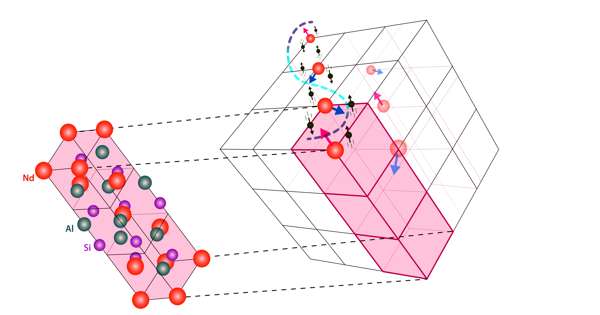Mental health specialists have argued over whether personality disorders may be divided into categories or dimensions for the past ten years. This topic has implications for the mental health of millions of people worldwide, rather than just being a dry academic dispute.
On the one hand, patients who require documentation for insurance purposes may benefit from having a diagnosis on file. On the other hand, there is an argument that categorical diagnoses artificially group mental health problems based on differences along dimensional scales.
Borderline personality disorder (BPD) has gotten the most attention in this ongoing discussion of personality disorders. The adjective “borderline” is frequently used in a derogatory manner to describe persons who may come out as too clinging, unstable, and lacking in boundaries with others.
You might be familiar with someone who is mentioned in this way, usually negatively. The issue is whether it’s justified to place a label on someone, put a circle around their entire personality, and leave it at that.
A Global View of Borderline Personality Disorder
Researchers argued that the Diagnostic and Statistical Manual-5 (DSM-5), which is used in the United States and Canada, maintains a flawed and out-of-date approach of personality disorder classification based on categories.
The general consensus among the mental health field was that categories will be replaced with a new, dimensional classification system prior to the release of the DSM-5 in 2013.
At worst, it will complicate diagnosis, produce ambiguous research, and lead to a misunderstanding of what borderline disorder is.
Although this didn’t happen, a compromise of sorts was made because the DSM-5 has what is known as an alternative DSM-5 model that includes severity estimates along with personality dimensional ratings.
When creating the International Classification of Diseases (ICD)-10’s most recent revision, the ICD-11, researchers and clinicians made the decision to forego this dual strategy in favor of one that is essentially identical to the DSM-5 paradigm.
But the operative word here is “nearly.” The borderline personality specifier was developed by the ICD-11 authors based on the DSM-5 diagnosis because they were unable to let the borderline personality disorder category fade into obscurity.
This last-minute addition to the dimensional system may be mistaken, assert Fernando Gutiérrez and colleagues from the Institute of Neuroscience, Hospital Clinic (Barcelona) in 2022. Clinicians who support keeping the category in place contend that there was a need for consistency with prior understanding and treatment.
It could be a “passport to heterogeneity” (to use a phrase from another study), but it needs to stand up to rigorous empirical testing.
What Is This Thing Called Borderline Personality Disorder?
If there is such an entity deserving of the BPD diagnosis, the Spanish researchers believed they could discover it by administering a set of instruments based on the categorical diagnostic system as well as others using dimensional ratings.
A major strength of this research was the fact that the sample (1,799 adults) ranged from 16 to 76 years old (average age: 40) and included a clinical sample of 324 outpatients with a variety of DSM-5 disorders. None of the clinical patients received a categorical personality disorder diagnosis.
All participants completed a set of instruments based both on dimensions and categorical BPD systems. The dimensional measures tapped the five domains of the ICD-11 system.
The severity or potential negative effects of each dimension were assessed using the following scales: negativity affectivity (losing one’s temper, worrying, and feeling helpless), detachment (lack of friends, avoidance of people), dissociality (distrusting others and being callous), impulsivity, and anankastia or being overly organized. A different scale measured the borderline pattern specifier from the ICD-11 (the Borderline Pattern Scale; BPS).
Determining whether the BPS will stand on its own as a distinct entity from the dimensional scale measures became the empirical question. If so, keeping the specifier in the ICD-11 would be justified.
The researchers’ findings demonstrated that, despite the BPS maintaining its internal coherence, “it adds little to the prediction of severity when the other domains are examined.”
Therefore, the initial five categories appear to function rather well on their own as markers of a person’s place along a personality disorder continuum. Most importantly, however, was how closely BPS scores matched those for the ones that tapped into negative affectivity.
In fact, after applying the appropriate statistical corrections, there was an astonishing association between this severity index and BPS scores. 87 out of a possible 1.00. However, the authors point out that BPD was only mentioned as a “particularly powerful expression of negative affectivity” in one location.
Despite this proviso, the authors were highly critical of the ICD-11, based on their data, for including the BPS specifier: “At worst, it will complicate diagnosis, produce ambiguous research, and lead to a misunderstanding of what borderline disorder is.”
How to Help Rethink Your Understanding of BPD
Without a doubt, the word “borderline” will continue to be used often in both common speech and the media. BPD-related jokes, as well as fictitious portrayals of major characters in art and theater, will unavoidably continue. Given its widespread use, you can catch yourself categorizing others who seem to trample on your personal space or behave in perplexing, irrational ways.
The findings by Gutiérrez et al. cast significant doubt on the existence of this rare illness as opposed to its constituent parts, particularly severe negative affectivity. It’s possible that this characteristic is what you consider to be “borderline” in a person.
Disinhibition and detachment were the ICD-11 domains that came after BPS in the list when compared to BPS. This result indicates that BPD’s complexity cannot even be captured by a straightforward domain.
In conclusion, it can be challenging to consider people’s psychological problems in any way other than through the perspective of an all-or-nothing entity after a category label has been created. This more subtle method of knowing people based on their innate traits rather than just their given names can have effects that go beyond diagnosis and lead to daily contentment.
















